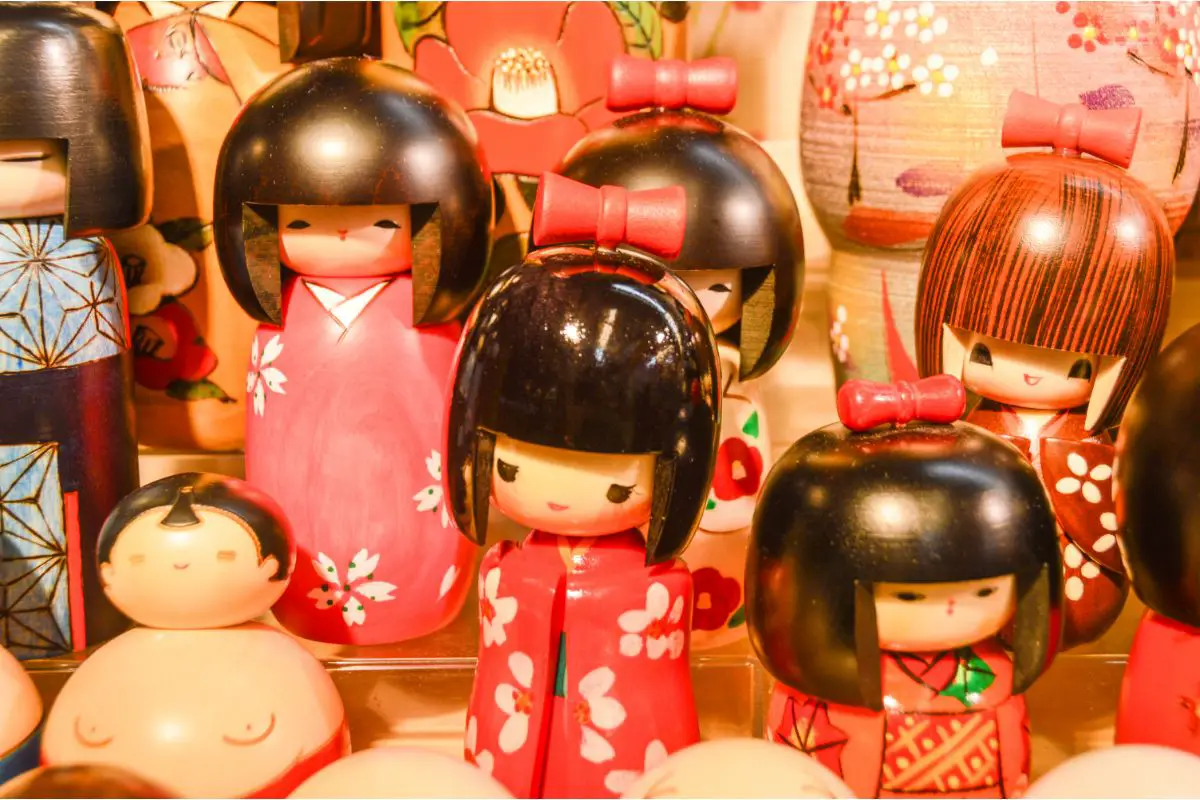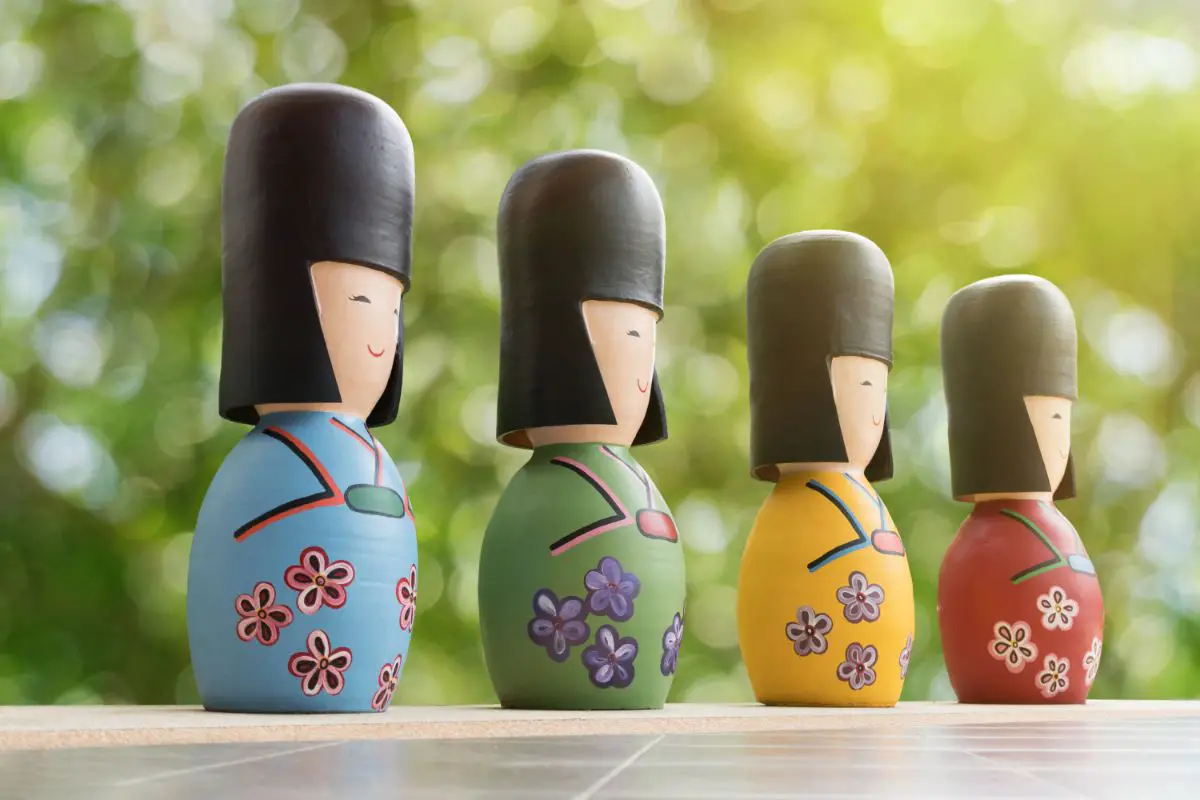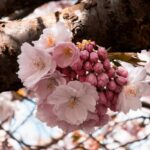If you ever walk around the bustling streets of any Japanese city and take a look through the window of any crafts shop or toy store, there’s a high chance you’ll catch a glimpse of a Kokeshi doll which first appeared in Japan over a century ago, but even today they are still immensely popular.

It must be said however that the appearance of these dolls is incredibly unique, and they also have quite a few symbolic meanings and references that many people outside of Japan don’t know about.
With that being said, keep reading as we take a look at Kokeshi dolls, what they represent, and how they’ve remained popular for so long.
History Of Kokeshi Dolls
While there are a few different tales regarding the origins of Kokeshi dolls, it is believed by many that they first appeared during the Edo Period (1600-1868) when they were handed out to visitors of hot springs in Tohoku.
This region of Japan is well known for its skiing activities and mountainous terrain, but it is also filled with hot springs, and the Kokeshi dolls were believed to have been sold by owners of these hot spring businesses to returning customers.
There have also been tales of farmers in the Tohoku region crafting these dolls from soft wood found near the hot springs later in the 19th century and bringing them home as a present for their children.
The name “Kokeshi” actually didn’t appear until 1940 however with the opening of the All-Japan Kokeshi Exhibition where it became the term to refer to these miniature dolls that, by this point, had begun taking the country by storm.
While there are multiple tales surrounding where they first appeared, what is generally believed is that they do come from the northern Tohoku region of Japan and have been associated with children since they were first created, and even today, they are recognized as both one of the most popular children’s toys in the country, and as one of Japan’s most vibrant folk arts.
Appearance Of Kokeshi Dolls
While Kokeshi dolls are instantly recognizable for their joyful and vibrant expressions, perhaps their most notable characteristic is that none of them have any arms or legs, and are simply one singular wood carving with a body and a head.
Despite this, they are actually incredibly customizable, to the point where it’s a challenge to find two of the same Kokeshi dolls.
Many craftsmen will experiment with the painted lines on the face to give the doll a unique expression, however, it’s on the body where they will use an array of colors and patterns to add some charm to the doll.
Years ago these designs remained fairly basic, however modern Kokeshi dolls tend to have much more expressive and detailed bodies such as having a miniature painting of Mount Fuji with cherry blossoms flying by or a geisha to make the doll look like it’s dressed up.
Some modern Kokeshi dolls will even have the face carved in deeper to give the illusion of hair surrounding the top of their head, which can usually be seen on female Kokeshi dolls more often.
How Do People Use Kokeshi Dolls Today?
While they are still incredibly popular, there are actually a few different reasons people in Japan will pick up a Kokeshi doll. Here are the three most popular reasons a person would consider purchasing these fun and unique dolls:
Toys For Children
Kokeshi dolls are one of the most popular children’s toys in Japan, and this is not only due to their cute and colorful designs, but also because the way they are crafted means that they don’t contain any small parts which could be dangerous for digestion, making them a lot safer than other smaller popular toys.
Antiques For Collecting
While they have been designed with children in mind for many years, there’s no denying that the intriguing and mysterious history of Kokeshi dolls has made them a unique emblem of Japanese culture, which is a reason many people have started collecting them.
Collectors have become determined to get their hands on as many of these dolls as possible ever since the All-Japan Kokeshi Exhibition opened in 1940 which highlighted how much time, effort, and expertise goes into crafting each and every doll, with many people regarding them as fascinating antiques of Japanese history.

Just like how the Matryoshka dolls are a celebrated part of Russian history, the Kokeshi dolls in a similar fashion hold a symbolic place within the history of Japan.
Spiritual Properties
Ever since they were first crafted, Kokeshi dolls have been said to possess several spiritual properties and benefits that make them very worthwhile to keep around, including the belief that these dolls encourage bountiful harvests which is why for so many decades, many Japanese farmers will keep a Kokeshi doll close to them or in their home.
Because they are so closely associated with children, Kokeshi dolls are also believed to encourage happiness and good health in children, along with being able to bring children closer to the mountain spirits which are a vital part of the country’s spiritual heritage.
Many people say that each and every Kokeshi doll holds a secret message within them that is seen as a token of friendship to share with others.
Therefore, some people choose to give a Kokeshi doll as a gift on a birthday, a national holiday, or just as a sign of goodwill and trust between them and a friend they care for dearly.
Summary
Kokeshi dolls have an incredibly fascinating history within Japan, and because of just how unique their appearance is, along with their historical significance and spiritual properties, it means that they are still very popular today.
If you ever visit Japan and are thinking about a suitable gift to bring back for a friend or family member, these colorful and expressive dolls are a perfect choice, especially since they are also seen as a token of gratitude and friendship.
- Transport in Japan: Exploring Buses, Public Transportation, Railways, Bicycles, and Major Cities - April 3, 2024
- Exploring Japan: Prefecture and Regions of Japan - April 3, 2024
- Travel Guide: Visiting Mount Koya (Koya, Mount Koya, Koyasan) – A Pilgrimage to the Spiritual Heart of Wakayama in Kansai, Japan - April 2, 2024








